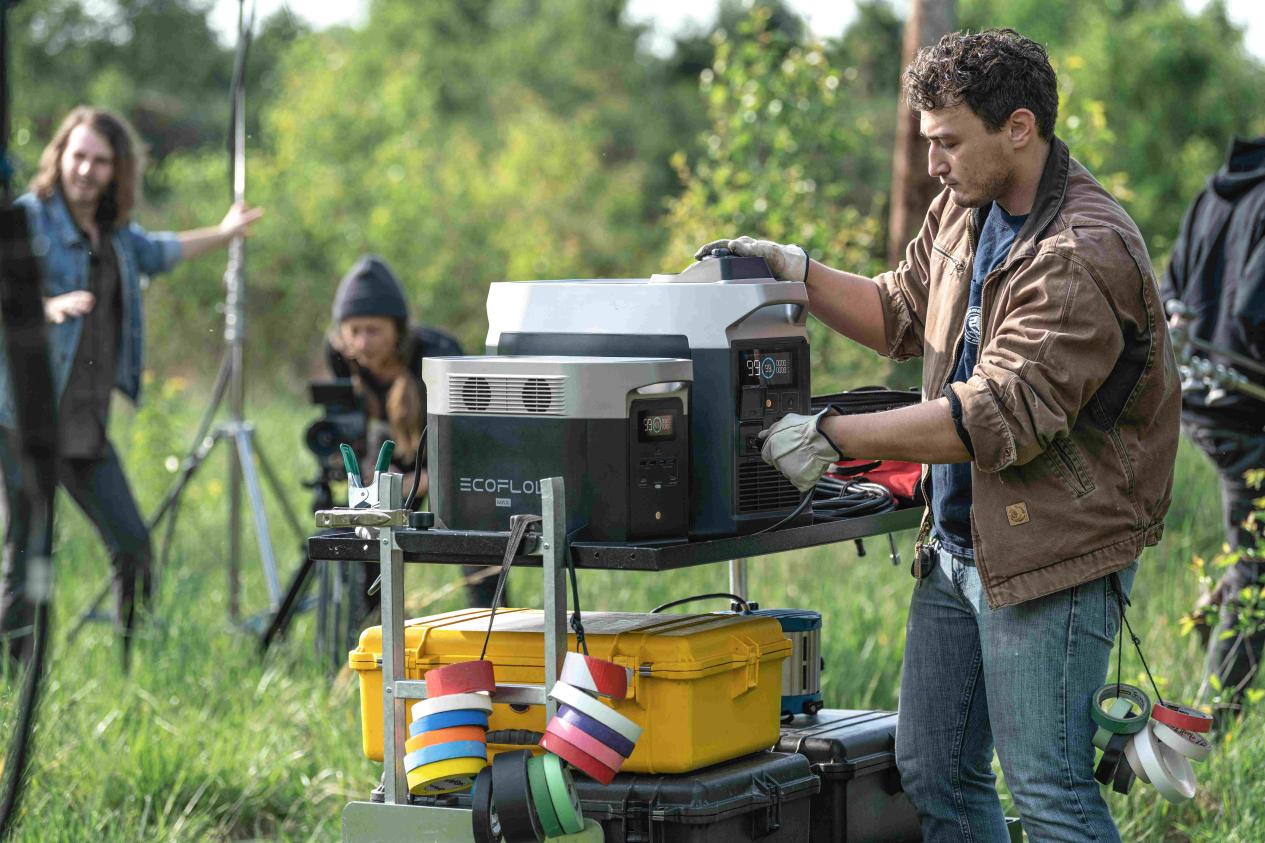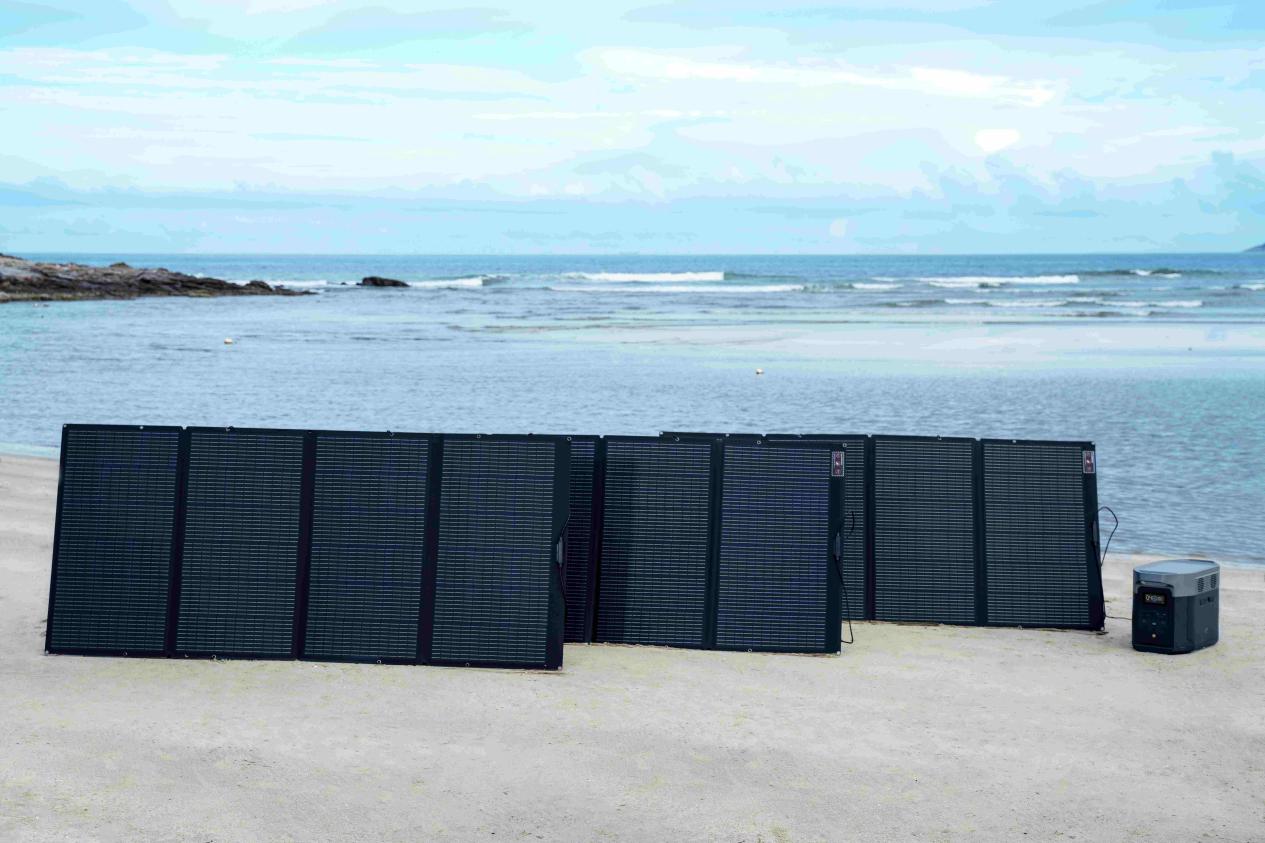How Many Watts Does a Window AC Use?
- What Does "Wattage" Mean for Your Window AC?
- BTUs vs. Watts: What’s the Relationship?
- Common Window AC Wattage Ranges
- What Affects Your AC’s Actual Watt Usage?
- Can You Run a Window AC on a Portable Power Station?
- How to Check Your AC’s Watt Usage
- 5 Tips to Reduce AC Power Consumption
- How to Match a Power Station to Your Window AC
- Why Wattage Matters to Solar Users
- Recommended Power Solution: EcoFlow DELTA 2 Max
- Getting the Most from Your Window AC
- 5 FAQs: Window AC Power Use
When summer heat drives temperatures into the 90s, a window AC is often the most affordable and accessible way to stay cool—especially in apartments, older homes without central air, or guest bedrooms that get stuffy. But how much electricity does it actually pull? That’s where understanding window AC wattage becomes important, especially if you want to manage power bills or use backup solutions like portable power stations or solar generators.
Here’s a practical breakdown of how much power window ACs consume, what affects their usage, and how to plan accordingly for grid, backup, or off-grid use.
What Does "Wattage" Mean for Your Window AC?
Wattage tells you how much electricity your AC uses per hour. The higher the wattage, the more energy it pulls from your home outlet or power station.
If your unit uses 800 watts, that means it draws 800 watt-hours (Wh) in an hour. For context, many standard bedroom or office-sized window ACs in U.S. homes fall between 400 to 1500 watts during regular operation.
But wattage isn't determined by size alone. Several things affect that number:
Cooling capacity (BTU)
Age and technology
Fan mode vs. compressor mode
To dig deeper, we need to look at BTUs.
BTUs vs. Watts: What’s the Relationship?
Most window ACs are sold based on BTU output—short for British Thermal Units, a measure of how much heat the AC can remove from a space in an hour. The higher the BTU rating, the more cooling power it provides. In the U.S., BTU is the standard unit used to size air conditioners.
To estimate power consumption:
Watts ≈ BTU ÷ EER |
EER stands for Energy Efficiency Ratio. Higher EER means better efficiency—fewer watts needed to achieve the same cooling effect.
Example:
- A 10,000 BTU AC with an EER of 10:
- 10,000 ÷ 10 = 1,000 watts
- A 10,000 BTU model with a better EER of 12:
- 10,000 ÷ 12 = 833 watts
Common Window AC Wattage Ranges
(Most standard models fall within the EER 8 to 12 range, which is how the wattage ranges in the chart below are estimated.)
BTU Rating | Suggested Room Size | Estimated Wattage |
5,000 BTU | Small bedroom, home office (<200 ft²) | 400–600 watts |
8,000 BTU | Apartment living room (~350 ft²) | 600–800 watts |
10,000 BTU | Master bedroom, finished basement | 800–1000 watts |
12,000 BTU | Large living space (~500–600 ft²) | 1000–1200 watts |
15,000 BTU | Studio apartment, sunroom | 1200–1500 watts |
These are typical running wattages. When your AC first starts up, the compressor draws a surge of power that may temporarily spike to two or three times the listed wattage. So while charts offer helpful guidance, your AC’s actual energy use can shift with conditions.
That brings us to the next layer: how your environment and settings influence energy draw from moment to moment.
What Affects Your AC’s Actual Watt Usage?
Even if a unit is labeled 1000 watts, the real power draw can vary based on real-life conditions. Key factors include:
Thermostat Setting
The lower you set your desired temperature, the harder your AC works.
Example: Cooling from 80°F to 75°F may require a short cycle. Cooling to 68°F could demand continuous compressor operation.
A single-digit difference in thermostat setting can increase power consumption by 10% or more, especially in hot weather.
Outdoor Heat
High outdoor temperatures directly impact compressor load.
In hot zones like Texas, Arizona, or Florida, midday temps above 95°F force the system to run longer—especially if the AC is undersized or the home lacks shade.
West-facing windows without sun protection amplify indoor heat gain in the afternoon, triggering longer cooling cycles.
Room Insulation
Not all homes are equal in thermal efficiency. Older homes often have thin walls, leaky windows, or poorly insulated attics, especially in northern states.
These inefficiencies let in more heat, making the AC work harder and longer. Even a modern AC can seem “weak” if insulation is lacking.
Fan vs. Cool Mode
These two are very different:
- Fan-only mode (air circulation without cooling) usually draws 50–200 watts, depending on fan speed.
- Cool mode engages the compressor, jumping power use to anywhere from 800 to 1500 watts, or even more for larger units.
Switching between modes smartly can help reduce total energy usage during mild weather.
On-Off Compressor Cycling
AC units don’t run at full power all the time. After reaching the set temperature, the compressor turns off while the fan may continue to run.
And the on/off cycling behavior means actual energy consumption averages out.
Example: A 1000W unit that runs only 20 minutes per hour draws an average of ~333W per hour over time.
Can You Run a Window AC on a Portable Power Station?
Yes—many off-grid or emergency users do it. But only if the power station supports the startup and sustains power requirements of your AC.
Here’s what to check:
- Running wattage: continuous power the AC needs
- Surge wattage: short bursts required at startup
- Inverter capacity: must match or exceed surge demand
- Battery capacity: determines how long you can run the unit


Real-World Example:
A 600Wh power station + 500W AC = about 1.2 hours of runtime under ideal conditions. In real life, that’s closer to 45–60 minutes once inverter losses and compressor cycles are factored in.
A larger model like the EcoFlow DELTA 2 Max (2048Wh capacity) can power a 1000W window unit for 1.5–2 hours and even longer when paired with extra batteries or solar panels.
How to Check Your AC’s Watt Usage
If you’re not sure how much power your AC draws:
Look for the Label
Near the plug or side panel, find the UL sticker. It lists voltage and amperage. Multiply volts × amps = watts.
Use a Watt Meter
Plug your AC into a power meter like Kill-A-Watt to see real-time usage.
Check Manufacturer Specs Online
Search for the model number. Most brands list wattage, EER, and CEER ratings.
5 Tips to Reduce AC Power Consumption
If you’re trying to stretch the limits of your solar battery or just cut summer bills, try these:
Set thermostat between 75–78°F
Use blackout curtains to block sunlight
Only run the unit when needed—use fan mode afterward
Close doors to the room for faster cooling
Seal air gaps around the window frame with insulation tape
If you're relying on battery power during outages or camping trips, every watt saved counts.
How to Match a Power Station to Your Window AC
For off-grid homes, RVs, or emergency kits, here's a simple approach:
Step 1: Find Your AC’s Power Specs
Look at both running and surge wattage. A 10,000 BTU unit might run at 1000W but spike to 1800W.
Step 2: Choose a Power Station with:
- Inverter capacity > surge watts
- Battery capacity at least 2× AC wattage per hour
(e.g. 2000Wh = 2 hours for 1000W AC)
Step 3: Add Solar Panels
Solar input helps recharge during the day. A 400W solar panel can buy you several extra hours of runtime depending on sun conditions.
Why Wattage Matters to Solar Users
When using solar energy at home or on the road, knowing your window AC wattage helps you balance generation and storage.
For example:
- A 100W solar panel in good sun gives ~100Wh per hour.
- A 1000W AC will drain that in minutes—so you’ll need much more capacity or storage buffer.
That’s why most solar-powered setups run AC units only during peak sun hours or store up energy in advance to handle the hottest parts of the day—or unexpected outages.
With the right knowledge, you can design a system that balances energy input and cooling demands in real time.


Recommended Power Solution: EcoFlow DELTA 2 Max
If you're looking for a reliable power station that can handle window AC wattage in real-world conditions, the EcoFlow DELTA 2 Max is a solid match. With a 2400W output, 2048Wh base capacity (expandable to 6144Wh), and fast dual charging (AC and solar), it covers both startup surge and multi-hour runtime. Whether you're cooling a small room during an outage or staying comfortable in an RV or off-grid cabin, the DELTA 2 Max provides consistent and safe AC power delivery.
It also pairs seamlessly with EcoFlow’s portable solar panels—helping you recharge on the go and stay energy-independent even during long summer days.
Getting the Most from Your Window AC
Understanding your window AC wattage isn’t just about calculating numbers—it’s about taking control of how you use energy. Whether you're preparing for emergencies, building an off-grid setup, or simply trimming summer bills, knowing your power requirements helps you plan smarter. From BTUs to watt-hours, and from surge ratings to runtime, the numbers tell a clear story.
And when you're ready to power that story, EcoFlow has the tools to back you up—whether the grid is up or not.
5 FAQs: Window AC Power Use
Q1: Can I run a window AC on a 1000W generator?
A: Yes, but only if your AC’s running wattage is under 800W.
Most 5,000–6,000 BTU units fit this range. Just make sure your generator can handle the startup surge, which is usually 1.5–2× higher than the running load.
Q2: Are inverter window ACs more efficient?
A: Yes, inverter ACs are more energy-efficient.
They adjust compressor speed based on room temperature, avoiding full on/off cycles. This smooth operation cuts power use—especially during partial loads or mild weather.
Q3: How long will a 2000Wh battery run a 500W AC?
A: A 2000Wh battery can run a 500W window AC for about 3 to 4 hours.
While basic math says 4 hours (2000Wh ÷ 500W), real-world losses bring it down. Inverter inefficiency (10–15%) and power used by fans or controls reduce usable energy to ~1700Wh.
Also, ACs cycle on and off, so the average load may drop to 350–400W. Expect closer to 3–3.5 hours in typical use.
Q4: Is fan-only mode worth it during hot weather?
A: Yes, fan-only mode is worth using during hot weather—especially after the AC has cooled the room. It consumes much less power (usually under 150W), as it only runs the blower, not the compressor. This helps circulate cool air, avoid hotspots, and maintain comfort without using full cooling power.
It's also great at night or on mild days when full cooling isn’t needed.
Over time, switching to fan mode reduces energy use and extends the AC’s life by giving the compressor a break.
Q5: What size solar panel offsets a 1000W window AC?
A: To offset a 1000W window AC, you need at least 1000W of solar panel output under full sun.
But real-world factors like cloud cover, panel angle, and system loss mean you should size up—aim for 1200–1500W total capacity to run the AC for several hours daily.
Example:
- 5× 300W panels = 1500W
- With 4–5 peak sun hours, you’ll get ~6000–7500Wh per day
Enough to power a 1000W AC for 6–7 hours depending on efficiency.